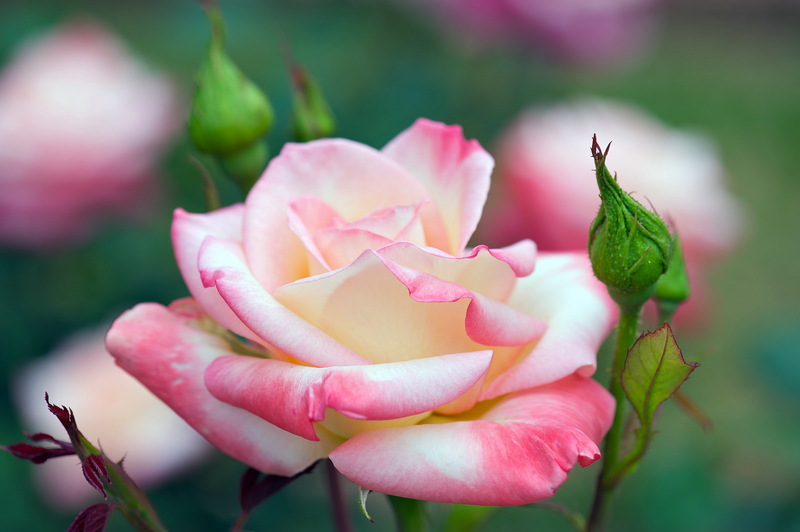Design a Peaceful Escape with Zen Garden Concepts
Posted on 25/09/2025
Design a Peaceful Escape with Zen Garden Concepts
Modern life buzzes with constant distractions and stressors. Creating your own peaceful escape at home is no longer a luxury--it's a necessity. Discover how you can cultivate tranquility and balance through the timeless beauty of Zen garden concepts.

Understanding the Essence of Zen Gardens
Zen gardens, also known as Japanese rock gardens or Karesansui, are traditional landscapes crafted to encourage relaxation, meditation, and contemplation. Unlike lush Western gardens, these spaces use a minimalist approach rooted in Zen Buddhism philosophy. The emphasis lies on meticulous placement of rocks, sand, gravel, and minimal greenery, providing an uncluttered canvas for peace.
- Calming atmosphere: Harnessing the power of simplicity to soothe the senses.
- Meditative design: Guiding the mind towards mindfulness and reflection.
- Naturally inspired: Emulating nature's most serene landscapes.
The Philosophy Behind Zen Sanctuary Designs
At the heart of Zen landscape concepts is the principle of wabi-sabi--the appreciation of imperfection and impermanence. By focusing on raw, natural elements and harmony, Zen gardens gently remind us to slow down, embrace stillness, and find beauty in simplicity.
Key Elements of a Zen Retreat
When you design your peaceful escape with Zen principles, it's important to understand the fundamental components that make these gardens so tranquil and unique.
1. Rocks and Stones
- Symbolism: Rocks represent mountains or islands in a sea of tranquility. They are often used to form focal points and anchor the design.
- Arrangement: The asymmetrical placement mirrors nature's unpredictable beauty. Each stone's size, texture, and color influences the garden's energy.
2. Sand or Gravel
- Raked patterns: Sand and gravel beds serve as metaphors for water, with carefully raked lines representing waves or ripples.
- Meditative practice: The act of raking is a mindful exercise that clears the mind and keeps the garden dynamic.
3. Water Features
- Symbolic presence: While traditional Zen gardens often lack actual water, the suggestion of water is integral. Koi ponds, stone basins, and gentle trickling fountains are popular additions in modern interpretations.
- Tranquility factor: The sound of water promotes calm and masks stressful background noise.
4. Minimal Plant Life
- Selective greenery: Moss, dwarf pines, bamboo, and ferns are chosen for their subtle hues and enduring nature.
- Symbolic meaning: Plants are understated, echoing growth, perseverance, and harmony.
5. Paths and Bridges
- Journey and mindfulness: Winding stone paths and small wooden bridges invite slow, conscious movement through the space.
Benefits of a Home Zen Garden
Bringing Zen-inspired garden designs into your home offers numerous advantages beyond visual appeal:
- Stress-reduction: Minimalist landscaping and soothing features help lower anxiety and support relaxation.
- Mindfulness: Raking gravel, tending moss, or merely sitting in the garden promotes awareness and mental clarity.
- Low maintenance: Compared to traditional flower gardens, Zen escapes require less frequent watering, pruning, and care.
- Personalized sanctuary: Each Zen garden reflects its creator's intentions and values, offering unique space for reflection.
How to Design Your Tranquil Zen Escape
Eager to infuse your outdoor (or even indoor) areas with Zen serenity? Follow these guidelines to design a Zen garden retreat tailored to your needs and surroundings.
Step 1: Select the Location
- Outdoor choices: Opt for a quiet corner of your yard, a balcony, or rooftop. Shady spots beneath trees or beside fences work particularly well.
- Indoor possibilities: Small courtyards, sunrooms, or just a corner by a window can transform into a Zen oasis with careful curation.
Step 2: Define the Boundaries
- Frames: Use wood, bamboo, or natural stone edging to separate the Zen area from the rest of your landscape, creating a sense of enclosure.
Step 3: Prepare the Base
- Gravel/sand bed: Lay a weed barrier cloth, then add a generous layer of clean sand or decorative gravel.
Step 4: Arrange Rocks and Stones
- Focal points: Position larger stones thoughtfully, using odd numbers and grouping them in naturalistic clusters or solitary placements for visual impact.
- Texture & composition: Combine rocks of different shades and shapes for dynamic appeal.
Step 5: Add Symbolic Elements
- Water features: Consider a small pond, bamboo fountain, or stone basin.
- Plants: Choose low-growing, easy-to-maintain greenery such as moss or ornamental grasses.
Step 6: Create Paths and Seating
- Movement: Stepping stones or gravel paths wind through the space, encouraging mindful walking.
- Rest: Simple benches, flat stones, or floor cushions provide places to sit and reflect.
Step 7: Incorporate Decorative Touches
- Lanterns: Stone lanterns or subtle solar lights enhance ambiance by dusk.
- Statues & ornaments: Minimalist Buddha statues or wind chimes bring an additional layer of tranquility.
Small Space Zen Garden Concepts
Even if you lack a sprawling landscape, you can cultivate miniature Zen escapes within smaller footprints. Tabletop Zen gardens are ideal for apartments or offices--they typically comprise a tray with sand, small rocks, and a miniature rake.
- Desktop focus: Keep one on your desk for quick stress relief and meditation at work.
- Balcony retreats: Use containers, planters, and bamboo screens to create privacy and serenity outdoors--even in compact spaces.
- Portable tranquility: Small Zen gardens are easily moved, letting you refresh your scenery as needed.
Practical Tips for Maintaining Your Zen Escape
Consistent care keeps your tranquil Zen landscape inviting and harmonious. Here's how to preserve its peaceful energy:
- Regular raking: Redo patterns in the sand or gravel to prevent weeds and refresh the garden's appearance.
- Minimalist approach: Avoid overcrowding with too many decorations. Less is more.
- Seasonal cleanup: Remove fallen leaves and trim overhanging branches as needed.
- Water features: Clean pumps and refill water to avoid stagnation.
Inspirational Zen Garden Design Ideas
Ready to ignite your creativity? Below are some inspiring themes and Zen retreat concepts to help shape your own peaceful sanctuary:
Bamboo Passage Garden
- Line a simple gravel path flanked by tall bamboo, letting filtered light create shifting patterns on the raked ground.
- Add a small teak bench for contemplation amid the rustle of leaves.
Mossy Minimalism
- Emphasize various mosses blanketing stones and edging walkways for a dreamy, soft effect.
- Place one or two large, weathered rocks at the heart of the design.
Pebble Dry Riverbed
- Create a "flowing" stream bed with different shades of pebbles, edged by low wooden bridges or stepping stones.
- Use compact shrubs or ferns for structure.
Urban Courtyard Zen Retreat
- Combine a minimalist wooden deck, granite planters, and a trickling fountain for a modern escape.
- Use a vertical moss wall for privacy and lushness.
Zen Garden Concepts for Every Aesthetic
Whether you adore traditional minimalism or want a touch of modern flair, Zen-inspired landscaping concepts can be tailored to fit any environment:
- Classic Japanese: Use authentic materials, traditional stone lanterns, and raked sand beds.
- Modern Zen: Pair clean lines with sculptural plants and sleek water features.
- Rustic retreat: Integrate reclaimed wood, organic stone, and weathered iron accents for a wabi-sabi vibe.
- Contemporary minimalist: Monochrome palettes, geometric patterns, and subtle LED lighting add urban sophistication.
Sustainable Zen Garden Design
Eco-friendly Zen escapes not only boost your wellbeing but also contribute positively to the planet:
- Drought-tolerant planting: Choose native species and succulents to minimize water use.
- Recycled materials: Repurpose stones, reclaimed wood, or upcycled containers.
- Natural mulches: Use bark, gravel, or pebbles instead of artificial covers.
Final Reflections: Creating Your Zen Sanctuary
Designing a peaceful escape with Zen garden concepts is more than a landscaping project--it's an invitation to slow down, breathe, and reconnect with your inner calm. By thoughtfully blending rocks, plants, sand, and symbolic elements, you create a living meditation--a timeless refuge from the chaos of everyday life.
Start small, experiment with textures and arrangements, and most importantly, let your Zen retreat reflect your own journey towards tranquility. You'll find that with every mindful moment spent in your garden, the peace you cultivate will ripple outwards, enriching your home and your life.

Frequently Asked Questions About Zen Gardens
What plants are best for a Zen garden?
Opt for small evergreens, moss, bamboo, and ferns. These provide subtle greenery and can thrive with minimal upkeep, echoing the natural and simple theme of Zen landscapes.
Can I create a Zen garden indoors?
Absolutely! Tabletop Zen gardens or corner retreats with sand, rocks, and compact plants provide inner calm within any indoor space.
How much maintenance do Zen gardens require?
These tranquil escapes require little regular attention compared to traditional gardens, focusing mostly on occasional raking, pruning, and light cleaning.
Do I need a large area to enjoy Zen gardening?
Not at all. Small containers, trays, or a tiny backyard space can be transformed with mini Zen garden concepts.
Begin Your Peaceful Journey Today
Embrace the transformative powers of Zen garden design to create your own peaceful escape. Whether you are starting with a simple sand tray on your desk or a full landscape project, remember--the art of peace begins with a single stone, a moment of quiet, and intention.
If you're ready to bring serenity closer to home, explore the infinite possibilities of Zen garden concepts--your new sanctuary awaits.



